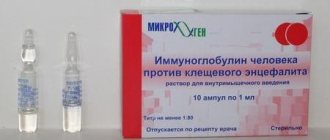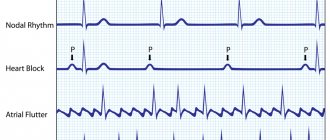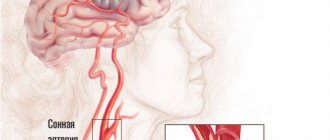Pulmonary edema is a pathological condition that is caused by the sweating of non-inflammatory fluid from the pulmonary capillaries into the interstitium of the lungs and alveoli, leading to a sharp disruption of gas exchange in the lungs and the development of oxygen starvation of organs and tissues - hypoxia. Clinically, this condition is manifested by a sudden feeling of lack of air (suffocation) and cyanosis (cyanosis) of the skin. Depending on the causes that caused it, pulmonary edema is divided into 2 types:
- membranous (develops when the body is exposed to exogenous or endogenous toxins that violate the integrity of the vascular wall and alveolar wall, resulting in fluid from the capillaries entering the lungs);
- hydrostatic (develops against the background of diseases that cause an increase in hydrostatic pressure inside the vessels, which leads to the release of blood plasma from the vessels into the interstitial space of the lungs, and then into the alveoli).
Pulmonary edema
Pulmonary edema is pulmonary failure, accompanied by abundant release of transudate from the capillaries into the lungs. Pathology occurs as a result of increased pressure in the vessels and fluid entering the alveoli and lungs. Edema is accompanied by impaired gas exchange and the development of acidosis and tissue hypoxia. Fluid accumulation is facilitated by a decrease in oncotic pressure and an increase in hydrostatic blood pressure.
The disease can occur in people of different ages. Any person who is attentive to their health can identify this problem. Patients feel an acute lack of air and severe suffocation. In the absence of resuscitation measures, the person suffocates.
Pulmonary edema often causes death and therefore requires immediate hospitalization and emergency professional assistance. The rapid filling of the alveoli with fluid impedes the movement of oxygen. A person with pulmonary edema feels an acute lack of oxygen and begins to choke. This happens during night sleep.
The problem is provoked by various negative processes in the body.
Often swelling is the result of changes in blood pressure, where it becomes lower or higher.
Pathology can be a complication of various diseases in pediatrics, pulmonology, cardiology, urology, gynecology and gastroenterology. In order to select the correct treatment for pulmonary edema, the doctor needs to study the pathophysiology, symptoms and nature of the disease.
The cause of the problem may be heart disease, infusion therapy without the use of diuretics, chest trauma, respiratory tract diseases, liver or kidney failure, and the effects of toxic substances. Sometimes the provoking factors are acute infectious diseases and severe neurological diseases.
Diagnostics
The stage of the pathology is diagnosed by assessing the physical condition of the patient. In addition, laboratory data is used. For analysis, blood is taken and examined for the gases it contains. The biological fluid is also tested for biochemistry to find out the reasons that led to the occurrence of the pathological condition.
An electrocardiogram is performed and the chest organs are examined using an X-ray. An X-ray with edema shows an expansion of the borders of the heart and pulmonary roots. Most often, a symmetrical, uniform darkening is visible, but in some cases focal lesions may appear.
Palpation is carried out, the doctor determines the pulse. In the patient it is weak and frequent. The doctor listens to breathing, which should be bubbling and wheezing.
Types of disease
Depending on the reasons that provoked the problem, there are two types of pulmonary edema: cardiogenic and non-cardiogenic.
The cardiogenic type occurs when there is insufficiency of the left ventricle of the heart and impaired circulation in the vessels that are involved in transporting blood from the heart to the lungs and vice versa. The main causes of the pathology are: heart disease, myocardial infarction, arterial hypertension, angina pectoris. To confirm the diagnosis, patients have the pressure in the capillaries of the lungs measured, which rises above 30 mmHg. Most often, pulmonary edema occurs in bedridden patients at night.
The main causes of this pathology include: defects of the heart and blood vessels, myocarditis, acute left ventricular failure, myocardial infarction, blood stagnation and heart defects.
The main signs of cardiogenic edema are:
- increasing cough;
- suffocation;
- tissue hyperhydration;
- dyspnea;
- separation of foamy sputum;
- dry wheezing;
- unstable blood pressure;
- tachycardia and severe chest pain.
The cardiogenic type occurs quickly and there is very little time to provide first aid to the patient. The highest percentage of mortality falls on this species.
The non-cardiogenic type provokes an increase in vascular permeability and the penetration of fluid through the wall of the pulmonary capillaries. The alveoli fill with fluid and gas exchange is disrupted. Pathology develops with renal failure, sepsis, pneumosclerosis, liver cirrhosis, lung cancer and drug addiction. Also at risk are people who take acetylsalicylic acid for a long time. Confirmation of non-cardiogenic edema is good blood pressure and cardiac output.
Allergic
Occurs with increased sensitivity to certain allergens. The problem can be caused by taking medications or insect bites. If the cause of allergic pulmonary edema is not promptly eliminated, anaphylactic shock and death may occur.
The mechanism of development of pulmonary edema is rapid and without emergency assistance the consequences can be fatal. Characteristic signs are swelling in different parts of the body: eyelids, lips, nasopharynx, face, larynx. This condition occurs suddenly and begins with redness and itching of the skin. Then there is compression in the chest area, wheezing, difficulty breathing and shortness of breath. Rarely, abdominal pain, nausea, vomiting and fecal and urinary incontinence may occur.
The only effective treatment is to eliminate the allergen. In order to alleviate the patient's condition, he must be seated.
Spicy
Acute pulmonary edema develops very quickly, up to about 4 hours. Even with prompt resuscitation measures, it is not always possible to prevent death. This happens because so much blood serum accumulates in the lungs that breathing becomes almost impossible. In some cases, the attack can be stopped with the help of medications.
We recommend further reading: Causes and methods of treating hydrocele and testicular swelling in men
The main factors provoking pathology include: anaphylaxis and myocardium. It can also occur as a result of severe head injuries, encephalitis and meningitis.
Interstitial
Cardiac asthma is a manifestation of interstitial pulmonary edema. This condition can be provoked by physical or emotional stress. Basically, the problem makes itself felt at night. The first alarm bell is a slight cough. But no attention is paid to it, and the problem worsens: shortness of breath appears and the person cannot breathe deeply. Then, due to oxygen starvation, headache and dizziness appear. Sweat appears on the skin, profuse salivation begins and the nasolabial triangle turns blue.
The disease is highly treatable. But in the absence of timely treatment, it goes into the most dangerous stage - the alveolar stage.
Carmine
Carmine pulmonary edema got its name because of the characteristic red color of the lung tissue. This problem appears as a result of restriction of respiratory movements and delay in the ejection of blood from the lungs. Blood stagnates in the vessels and intracapillary pressure increases. Such swelling is quite common during general hypothermia of the body.
Consequences
If treatment is not started on time, there is a high mortality rate. Alveolar edema is fatal in 20-50% of cases. If the condition develops due to myocardial infarction or anaphylactic shock, up to 90% of patients die. A disorder with an immediate course also ends in death: doctors do not have time to resuscitate the patient.
Negative consequences are also possible in cases where the swelling was managed in a timely manner. Ischemic lesions of internal organs are often observed. The development of congestive pneumonia and pneumosclerosis is possible. If the cause cannot be diagnosed, the likelihood of relapse is high.
The chance of a favorable outcome increases if help was provided immediately after the first symptoms were detected, the cause was found and eliminated.
Classification of pulmonary edema
Each disease has its own classification code. Pulmonary edema is assigned an ICD code number 10. The classification of the disease depends on the causes of pulmonary edema. It can be membranous and hydrostatic in nature.
The first is provoked by toxins of various origins, so it is often called toxic. Occurs when inhaling gasoline, glue and poisoning with arsenic, alcohol, barbiturants. It is often asymptomatic and detected only after radiography. The course of the disease is quite complex and respiratory or cardiac arrest may occur within the first minutes. Brain function is impaired.
The second may manifest itself as a complication of cardiovascular disease. The risk group includes people over 40 years of age. Rarely, the problem occurs in young children with congenital heart disease. Appears during diseases accompanied by increased blood pressure.
According to the form of complications in pulmonary edema, the following classification of pathology types is used:
- Alveolar. It is considered the most dangerous, causing death.
- Interstitial. It responds well to treatment.
The classification according to severity is as follows:
- First or pre-edema. Characterized by a disorder in the frequency and rhythm of breathing, shortness of breath appears.
- Second. Wheezing appears and shortness of breath increases.
- Third. Symptoms intensify and are heard by people around you, even at a distance.
- Fourth. Pronounced symptoms of edema.
Prevention
Pulmonary edema can be prevented. It depends on the treatment of the underlying disease. Moreover, it is necessary to avoid the influence of toxic factors. For example, eliminating excessive consumption of the body.
It is necessary to adhere to certain measures in prevention. First of all, avoid complications of infectious diseases. If the infection enters the human body, it is important to immediately begin drug therapy. Since the infectious process can develop into a chronic stage.
It is known that the chronic stage of the disease lasts quite a long time. Infections and viruses can be present in the human body and cause adverse effects. Including affecting other organs and systems.
The use of medications is also important. For example, if there is an allergic reaction, it is important to discontinue the drug. Since the reaction caused by an allergy can be extremely unfavorable. Such reactions include anaphylactic shock.
As a result of anaphylactic shock, pulmonary edema occurs. A difficult pregnancy is also of great importance in the prevention of the disease. For example, in case of eclampsia in pregnant women. If this condition is not eliminated, pulmonary edema develops.
Cardiovascular pathology plays a decisive role. For example, severe conditions due to myocardial infarction. That is why great importance is given to these pathologies, they are treated on time and timely diagnosis is carried out.
go to top
Pathogenesis of pulmonary edema
The pathogenesis of the pathology occurs differently depending on the disease. Signs of pulmonary edema may differ from each other and manifest themselves differently for each disease. Normally, the respiratory system contains 600 ml of blood. This volume is controlled by oncotic pressure. The rate of liquid penetration through the capillary walls is controlled by hydrostatic pressure. Under the influence of certain factors, oncotic pressure decreases, and hydrostatic pressure increases and the permeability of the alveolar capillary membrane is disrupted, which causes severe swelling of the respiratory organ.
Most often, pulmonary edema occurs due to heart disease. In early childhood, vascular pathologies that are involved in blood transfer begin to develop. With age, vascular diseases develop into heart failure of the mitral valve.
At the initial stage of cardiovascular disease, fluid is filtered into the interstitial tissues. Blood circulation is disrupted, blood movement slows down. Then the permeability of the walls increases, the cells are filled with protein elements. The liquid combines with oxygen and forms a foamy mass that prevents the flow of oxygen. Pressure rises and hypoxia develops. The disturbance of microcirculation in the small circle increases, and the effusion of exudate increases.
It turns out to be a cyclical circle - heart failure provokes edema, which in turn contributes to the progression of the disease. Negative changes occur in all capillaries and smallest vessels, which together ensure the movement of blood from the heart to the lungs.
The pathogenesis of edema of the respiratory organ is classified as follows:
- Myocardial infarction and pulmonary embolism. The cause of the problem is a disruption of the right ventricle, leading to pulmonary edema.
- Hypertension. The process proceeds similarly, with the only difference being that the aortic valves are involved.
- Pulmonary edema after surgery. There is a decrease in the activity of the respiratory system, which can provoke stagnation and fluid accumulation.
- Hypothermia, fear, physical stress and overexcitation of the nervous system provoke the accumulation of some blood in the lungs.
Traumatic brain injuries. Heart failure and pulmonary edema develop.
Classification
There are several different classifications.
According to the flow variant, 4 types are distinguished. Lightning develops within a few minutes. It is impossible to save a person in this case. Acute swelling begins quickly. It often ends in the death of a person even with timely assistance. But even in this case there is a chance to save the victim. Develops in severe diseases of the cardiovascular system and respiratory organs. Subacute has a wave-like course: symptoms either increase or decrease. Protracted is observed in chronic pathologies, often its signs are weakly expressed and erased.
Interstitial and alveolar edema are also distinguished. They are stages of the same process, but the alveoli are affected later. With the interstitial variant, shortness of breath occurs, the person begins to cough, but the sputum does not come out. If treatment is not started promptly, the exudate penetrates the alveoli. In this case, when coughing, foamy sputum is released, first dry, and then wet wheezing occurs. Then suffocation begins, followed by death.
Diagnosis of pulmonary edema
Diagnosis is of particular importance in pulmonary edema. Because it depends on how correct the therapeutic measures will be. The only exception is when the patient is in serious condition and needs emergency stabilization. If the patient is stable, then after assessing his general physical condition, he undergoes instrumental and laboratory tests.
A preliminary diagnosis can be made during examination of the patient based on the following signs:
- serious condition;
- characteristic complaints;
- swelling of the veins in the neck;
- profuse sweating, change in skin color.
We recommend further reading: Scrotal swelling in men
Conduct a blood gas test. At the initial stage of the disease, there is mild hypocapnia; as it progresses, the partial pressure of carbon dioxide (PaCO2) and the partial pressure of oxygen in arterial blood (PaO2) decrease. At the late stage, PaO2 decreases and PaCO2 increases. A biochemical blood test (urea, total protein, liver tests, creatinine, coagulogram) helps differentiate the causes of the problem.
Patients are given a cardiogram, which often reveals myocardial ischemia, left ventricular hypertrophy, and arrhythmia. This type of examination is necessary to confirm or exclude the cardiac nature of the disease.
An x-ray is required if there is pulmonary edema. X-ray will determine a decrease in the transparency of the organ, and diffuse darkening of the pulmonary fields. In the images, the specialist will be able to determine the expansion of the roots of the lungs and the borders of the heart. In the central part of the respiratory organ, with the alveolar type of pathology, a darkening is visualized, which is similar in shape to a butterfly. Pleural effusion is sometimes noted. Pulmonary artery catheterization allows differentiation between cardiogenic and non-cardiogenic types. To do this, a catheter is inserted into an artery of the lung, with which blood pressure is measured.
CT is more informative for pulmonary edema. This research method is preferable for cardiac edema. During the study, thickening of the intralobular and interlobular interstitium in the upper part of the organ is revealed. A change in the color of the lung tissue is also determined, which indicates that it is filled with fluid.
Traditional medicine methods
At home, you can eliminate the symptoms of pulmonary edema and reduce the drug load on the liver using folk remedies.
A decoction of honey (a glass) and anise seeds (three tablespoons) is effective. The ingredients are poured with hot water, the product is infused for 15-20 minutes. The prepared decoction is taken orally once a day.
To cleanse the respiratory tract, use a decoction of flaxseeds. It is necessary to boil five tablespoons of the raw material in a liter of water, then strain with gauze. The finished decoction is drunk 200 grams during the day 5-6 times.
In folk medicine, there are quite a few recipes for infusions and decoctions that can be used to treat edema. The main goal of such methods is to eliminate cough and obtain an expectorant effect to remove fluid from the lungs.
Symptoms of pulmonary edema
The problem with diagnosing the disease is that it does not always have pronounced symptoms. This is why it is so important to know how to recognize pulmonary edema. Sometimes it is preceded by dizziness, weakness, headache, wheezing and dry cough. Such symptoms are observed during pulmonary edema several hours before an attack, when the cells of the organ tissue are filled with fluid.
An increase in symptoms in the cardiogenic type is possible several days before the attack. Cardiac asthma occurs at night or at dawn. Shortness of breath should cause alarm, because it is considered the first alarm bell. Then there is a cough, difficulty breathing and suffocation. As the disease progresses, the fluid in the alveoli mixes with air. The result is a wet cough accompanied by pink, frothy sputum. Breathing becomes hoarse.
Pulmonary edema due to disruption of the liver or kidney system is manifested by pronounced shortness of breath in the patient during rest and rapid heartbeat.
Characteristic signs of interstitial edema are profuse sweating, cyanosis of the nails and lips. Blood pressure also increases. Breathing becomes intense and is accompanied by wheezing.
With the alveolar type, respiratory failure, diffuse cyanosis, shortness of breath, swelling of the veins of the neck and puffiness of the face are noted. Even at some distance, bubbling wet rales can be clearly heard.
With all types of swelling of the respiratory organ, confusion and lethargy appear, the pulse becomes thready, and breathing becomes shallow. There is increased sweating, cold extremities and pale skin. Blood pressure decreases, pulse is weak. The patient notes an increased feeling of anxiety, decreased ability to work and weakness.
In order to make a correct diagnosis, it is necessary to study the symptoms of pulmonary edema and then prescribe treatment.
Symptoms of pathology
Symptoms of the disease appear sharply and increase rapidly. In this case, the clinical picture depends on the speed of transformation of the interstitial stage of edema into the alveolar stage.
Forms of pulmonary edema are classified according to the rate of increase in symptoms as follows:
- acute (symptoms of alveolar edema are observed 2-4 hours after signs of interstitial edema appear) – formed during myocardial infarction, mitral valve defects (mainly after psycho-emotional stress or severe physical activity);
- subacute (lasts from four to twelve hours) – occurs due to fluid retention in the body, with acute kidney or liver failure, congenital defects of the great vessels and heart, lesions of the pulmonary parenchyma of infectious or toxic origin);
- prolonged (lasting a day or more) – occurs with systemic pathologies of connective tissue (vasculitis, scleroderma), chronic inflammatory processes in the lungs, chronic kidney failure);
- fulminant (after the onset of edema, within a few minutes it becomes the cause of the patient’s death) – noted with extensive myocardial infarction and anaphylactic shock.
In chronic diseases, pulmonary edema usually begins at night, which is caused by the patient staying in a horizontal position for a long time. With pulmonary embolism, the development of events at night is not at all necessary, since a person’s condition can worsen at any time.
The main symptoms of pulmonary edema are as follows:
- severe shortness of breath at rest; bubbling, shallow, rapid breathing that can be heard from a distance;
- a sudden feeling of severe lack of air (painful suffocation), which intensifies when the patient lies on his back; in this case, the patient is forced to be in orthopnea, that is, sit with the body tilted forward and leaning on outstretched arms;
- squeezing, pressing pain in the sternum caused by oxygen deficiency;
- cough with wheezing that can be heard at a distance (remote), discharge of pink foamy sputum);
- pronounced rapid heartbeat (tachycardia);
- patient agitation, confusion, fear of death, coma - lack of consciousness.
- cyanosis (blue discoloration) or pallor of the skin, strong sticky sweat as a result of centralization of blood circulation in order to provide vital organs with oxygen.
Read also: Why is pulmonary edema dangerous?
Consequences of the disease
Every person needs to know the dangers of swelling of the respiratory system. Because pulmonary edema can have serious consequences. Under the influence of certain factors, it leads to the release of fluid into the lung tissue, which is not absorbed back.
Death often occurs as a result of pulmonary edema. After stopping the attack and preventing suffocation, treatment begins. If left untreated, the pathology can cause complications such as recurrent pneumonia. Long-term respiratory failure negatively affects all internal organs: blood circulation in the brain is disrupted, cardiosclerosis develops, and ischemic damage to organs occurs. Diseases require constant drug therapy.
The most common complications are:
- Cardiogenic shock. Due to the accumulation of fluid in the respiratory organ, heart failure develops in older people. Blood supply to organs decreases. Up to 90% of cases end in the death of the patient.
- Asystole. The cardiac system completely stops its activity. The problem is provoked by a heart attack or pulmonary embolism. Cardiac asthma provokes pulmonary edema and worsens the patient's condition.
- Pneumothorax. Develops against the background of edema. Characterized by the accumulation of air in the pleural cavity.
Timely treatment gives a positive prognosis for further developments. Therapy under the supervision of specialists will stop organ damage and the development of pneumonia.
Features of the clinic in case of protracted course
Pulmonary edema can be divided into 4 main forms of course: acute (the peak occurs within 2-4 hours), subacute (up to 12 hours), fulminant (death within a few minutes) and prolonged.
With a protracted form of the pathological process, the increase in symptoms continues for more than a day.
This pulmonary edema manifests itself gradually, beginning to bother the patient with attacks of shortness of breath during physical exertion. Gradually the condition progresses, tachypnea develops. Breathing increases up to 40-50 times per minute. Patients complain of dizziness and general malaise. Over time, the clinical picture worsens and develops into typical symptoms of an acute pathological process.
However, already at the very beginning of fluid accumulation in patients, gurgling wheezing in the lungs can be heard . This indicates a small amount of transudate in the alveoli. In addition, there are signs of pulmonary emphysema. If the doctor reacts at this stage of the development of the condition, he will be able to avoid taking many potent drugs and prevent serious hypoxia of the body.
A protracted course of the pathological process is typical for people with chronic diseases. For example, heart failure or kidney pathology. Gradually progressive liver cirrhosis also leads to slowly progressive pulmonary edema.
Diagnostic signs
First of all, swelling can be recognized by its typical clinical picture. You can also ask the patient or people nearby about the events that preceded the deterioration of the condition. It is important to learn about the patient's serious illnesses. At the stage of emergency medical care, emergency measures begin without obtaining additional examination data.
Main criteria of the prehospital stage:
- percussion: dullness is detected;
- Auscultation: moist rales of various sizes;
- pulse measurement: weak filling, thready, frequent;
- pressure determination: above 140/90 or below 90/60 mm. Hg Art.
In bedridden patients, edema progresses faster, so treatment begins with simultaneous clinical studies.
Laboratory signs
First of all, the phenomena of hypoxia during edema are identified by determining the partial pressure of oxygen and carbon dioxide. Then a biochemical blood test is performed, which can indirectly indicate the etiology of the edema. Biochemistry is also taken to clarify the diagnosis and confirm myocardial infarction if its presence is suspected. An important study is a coagulogram, which allows you to detect increased blood clotting and pulmonary embolism.
Instrumental signs
Most instrumental methods are aimed at identifying problems in the heart. These include: electrocardiography, echocardiography, and so on. In addition, using pulse oximetry, blood oxygen saturation is detected (if edema is below 90%).
Chest X-ray is the leading test for lung swelling. It is used to detect fluid in the lung tissue. Swelling can be bilateral or unilateral. Additionally, pulmonary artery catheterization can be performed, but this requires certain indications.
Found a mistake? Select it and press Ctrl + Enter
How to treat pulmonary edema
In case of pulmonary edema, first of all, patients need to provide first aid. They are reassured because stress worsens their general condition. In order to ensure the outflow of blood to the lower extremities, he is seated. This position also reduces chest compression and improves gas exchange. Patients often pass sputum due to pulmonary edema, and in a sitting position the risk of suffocation is minimized.
We recommend additional reading: What to do if your labia are swollen, swollen or inflamed
Be sure to open windows for free access of oxygen. In the stuffiness, the patient's condition worsens. The patient's pulse and respiration are continuously monitored. For high blood pressure, he is given a nitroglycerin tablet. When the patient is unconscious or has low blood pressure, this drug is contraindicated for him. If signs of clinical death appear, indirect cardiac massage is performed until the ambulance arrives.
After the attack of pulmonary edema has stopped, the main treatment begins. Depending on the severity of the disease and the patient’s condition, treatment periods may vary. Compliance with all clinical recommendations of doctors guarantees stabilization of the condition and prevention of the development of complications.
Urgent Care
Upon arrival, the ambulance team performs an ECG. Then, humidified oxygen is supplied through a special mask. This method of supplying oxygen to a patient with pulmonary edema can reduce foaming. For pulmonary edema, the emergency team places two catheters in the patient to monitor the pressure in the lungs and arteries. To eliminate oxygen deficiency, patients are given oxygen therapy.
After providing first aid, emergency physicians decide what to do next. In most cases, the patient is transported to the hospital in the intensive care unit.
Drugs
For pulmonary edema, treatment is based on the use of tablets and drugs. Patients are prescribed intravenous nitroglycerin to relieve pulmonary edema. To reduce swelling and reduce venous backflow, they are prescribed diuretics (furosemide). Sodium nitroprusside effectively helps neutralize the load on the heart.
Depending on the underlying disease, promedol or morphine (for heart problems), dexamethasone, suprastin or prednisone (for allergies) are used. Diseases of internal organs are treated with antibiotics. Some medications, such as ganglion blockers (trimethaphan, azamethonium bromide), can achieve good results. They quickly reduce pressure in the small circle and stabilize the condition of patients.
Treatment at home
You should not self-medicate this disease. The use of traditional medicine is advisable during rehabilitation after treatment in a hospital. Home remedies can only help if a person knows how to relieve swelling with their help.
Treatment at home is based on the use of herbal decoctions and compresses. A decoction prepared with honey and anise seed has excellent expectorant properties. This decoction is drunk on an empty stomach several times a day. Ethanol is also widely used for alcohol inhalation. Alcohol vapor makes breathing easier.
A decoction of flax seeds effectively helps solve the problem. It is consumed at least six times, half a glass at a time. A decoction of cherry stalks and flax seeds helps prevent pathology.
First aid for swelling
Before the doctor arrives, you can do the following on your own:
- Place the patient in a sitting or half-sitting position with legs down
- Provide reliable access to a large peripheral vein (for subsequent catheterization)
- Organize access to fresh air
- Allow the patient to inhale alcohol vapors (96% for adults, 30% for children)
- Take a hot foot bath
- Use venous tourniquets on the limb (from 30 minutes to 1 hour)
- Constantly monitor your breathing and pulse
- In the presence of nitroglycerin and not low blood pressure - 1-2 tablets under the tongue.
Read also: Diagnosis of hyperprolactinemia
Emergency care for pulmonary edema, provided by the ambulance team before arriving at the hospital, is as follows:
- Oxygen therapy (active oxygen saturation)
- Foam suction and anti-foam therapy (oxygen inhalation through ethyl alcohol solution)
- Diuretic therapy (Lasix, Novurit) – removes excess fluid from the body; for low blood pressure, reduced doses of drugs are used
- If there is pain, take painkillers (analgin, promedol)
- Other drugs depending on the blood pressure level: high - ganglion blockers (promote blood outflow from the heart and lungs and flow to the extremities: benzohexonium, pentamine), vasodilators (dilate blood vessels: nitroglycerin)
- normal – reduced doses of vasodilators
- low – inotropic agents (increase myocardial contractility: dobutamine, dopmin).
Etiology of the disease
The etiology of alveolar pulmonary edema is often associated with the development of left-sided insufficiency of a congestive nature. Among other heart diseases that contribute to the occurrence of pathology, we can highlight the development of the following:
- atherosclerotic or post-infarction cardiosclerosis;
- acute myocardial infarction;
- endocarditis of infectious etiology;
- arrhythmias;
- hypertension;
- heart failure;
- aortitis;
- cardiomyopathy;
- myocarditis.
Predisposing factors include congenital and acquired heart defects, such as aortic insufficiency, mitral stenosis, aneurysm, coarctation of the aorta, open arterial disease, etc.
Urgent Care
This is an acute, life-threatening condition that cannot be relieved at home and requires immediate hospitalization! If a person develops all the signs of the disease, then it is necessary to immediately call an ambulance - this is the main part of emergency care.
- While waiting for the team to arrive, it is worth helping the patient into a sitting or half-sitting position, making sure to lower his legs from the bed. In this way, it will be possible to relieve the pulmonary circulation as much as possible.
- If possible, it is necessary to remove mucus from the upper respiratory tract.
- Open the windows to provide fresh air. Stuffiness in the room is unacceptable and even dangerous, as it will lead to oxygen starvation and worsen the situation.
- Help the patient calm down and not panic. A state of excitement increases a person’s need for oxygen, and this is detrimental, given the already present oxygen starvation.
Symptoms and signs
Toxic lung damage is characterized by 4 periods:
- reflex disorders;
- latent period – in this case the symptoms subside;
- pronounced swelling of the organ;
- manifestation of complications.
Reflex disorders manifest themselves in the form of symptoms of irritation of the mucous membranes. This may include a cough, watery eyes, runny nose, discomfort in the throat and eyes. There is also a feeling of pressure in the chest and pain, dizziness and weakness, these symptoms gradually increase. Breathing becomes difficult and even a reflex stop may occur.
Then the symptoms subside.
This only means that the pathology goes into a latent period of its course. This stage can last from 4 to 24 hours. There are no symptoms, and if an examination is carried out at this time, bradycardia or emphysema will be diagnosed. Pronounced pulmonary edema is already manifested in the next stage. And, as a rule, it fully develops within 24 hours. But quite often the symptoms begin to increase after 6 hours. Manifestations during this period include:
- increased body temperature;
- cyanosis of the skin and mucous membranes;
- breathing rate reaches up to 50-60 times per minute;
- breathing becomes heavy and can be heard from a distance, a bubbling sound is heard in the chest;
- sputum mixed with blood is released.
It should be noted that the volumes of sputum produced can be quite large. The quantity reaches 1 liter and even more.
- "Blue" hypoxemia. And when “blue” hypoxemia develops, the patient exhibits panic behavior. That is, he begins to greedily gasp for air and at the same time becomes overexcited, constantly rushes about and cannot assume a comfortable body position. There is also a pink, foamy discharge from the nose and mouth. This condition got its name because the skin turns blue.
- "Gray" hypoxemia. During this period, “gray” hypoxemia can also develop; it usually occurs in a severe form. In this case, the skin color takes on a gray tint, and the limbs become cold. The severity of the condition consists of a weak pulse and a rapid drop in blood pressure to a critical state. Gray hypoxemia can lead to collapse.
The main signs of toxic pulmonary edema are respiratory failure, shortness of breath and cough, chest pain and severe hypotension, which manifests itself along with tachycardia.
Acute toxic pulmonary edema is a condition that can cause the death of the patient within 24-48 hours (as a complication of the condition). In addition, other complications include secondary edema, bacterial pneumonia, myocardial dystrophy, and thrombosis of various locations.
A complication of toxic pulmonary edema is often right ventricular heart failure. This is explained by increased pressure in the pulmonary circulation.
Treatment
Treatment includes several areas - emergency measures at the prehospital stage, oxygen inhalation, drug therapy in the hospital. Treatment tactics depend on the form of the disease - cardiogenic or non-cardiogenic.
Treating pulmonary edema at home, using improvised means, is strictly contraindicated. It is necessary to provide qualified medical care.
How to help a sick person at home
Pulmonary edema is a medical emergency that requires immediate medical attention. First aid can be provided at home before the ambulance arrives. How to alleviate the condition:
- Place the person in a sitting position with their legs down.
- Provide access to fresh air - open a window, ventilate the room.
- Unfasten clothing if it is constricting your neck and chest.
- Hot foot baths. They increase blood flow to the legs, reducing the return to the pulmonary circulation.
- If possible, tourniquets or cuffs may be applied to the limbs. This will slow down the development of symptoms.
After the ambulance arrives, you must follow the instructions of the medical personnel. Further treatment includes taking medications, which are prescribed by a doctor depending on the cause and severity of the condition.
If symptoms of pulmonary edema appear, emergency medical attention is required
Basic treatment
Drug therapy for OA in older people includes the use of general and etiotropic drugs. Basic treatment includes the use of the following medications:
| Nitrates | They reduce pressure in the pulmonary capillaries, this reduces congestion in the pulmonary circulation and, accordingly, swelling. In addition, they reduce the load on the heart, which is necessary for cardiogenic edema. Nitrates include Nitroglycerin (a short-acting drug that must be administered every 3-5 minutes) and Sodium Nitroprusside (a longer-acting drug, 20-30 minutes). |
| Painkillers | Narcotic analgesics, usually morphine, are used to reduce pain. Morphine not only reduces pain, but also eliminates the influence of the sympathetic nervous system (vasospasm). |
| Diuretics | Loop diuretics are usually used - Furosemide, Torsemide. Their effect occurs quickly, within 5–7 minutes. Reduced swelling is associated not only with increased fluid removal, but also with dilation of the veins. |
Elderly people have many concomitant diseases, which makes it difficult to select treatment. For example, nitrates are contraindicated for the treatment of patients with mitral or aortic stenosis, arterial hypotension, and severe tachycardia.
When prescribing drug therapy, it is imperative to determine the cause of edema and concomitant pathology.
In case of OA, treatment is also aimed at improving blood oxygenation, using respiratory support. The patient is given oxygen through a face mask or nasal cannulas. Use breathing mixtures with a high oxygen content - 60–100%. Oxygen is supplied through defoamers, for example, ethyl alcohol.
Treatment depending on the cause
For OL, treatment is also used to get rid of the cause:
- For cardiogenic shock , drugs are used that increase myocardial contractility and vascular tone. The first group includes cardiac glycosides (Korglykon), the second - Dopamine, Dobutamine, Levosimendan.
- In case of heart rhythm disturbances, antiarrhythmic drugs are used, for example, Amiodarone, Lidocaine.
- For pneumonia, antibacterial agents are prescribed.
- In case of hypertensive crisis, drugs that lower blood pressure are additionally prescribed - beta blockers, ACE inhibitors.
Causes
The main reason for the formation of pathology is the ingress of toxic substances or drugs into the respiratory tract. Medicines that can have a pulmonary toxic effect include: diuretics, cytostatics, NSAIDs, narcotic analgesics, radiocontrast agents.
It is necessary to emphasize that the pathological condition in response to the effects of the listed drugs is formed only in persons with a history of intolerance to them.
Another provoking factor in the formation of pathology is the inhalation of pulmotoxins, namely:
- ammonia;
- hydrogen fluoride;
- concentrated acids;
- chlorine;
- phosphogene;
- nitric oxide;
- smoke.
The development of pathology can also be observed in response to inhalation of glue and gasoline vapors.
In adults
Pulmonary edema in adults occurs against the background of various diseases. Pulmonary edema occurs equally in both men and women. And in different age categories. Pulmonary edema in the elderly has a more serious course.
The disease in women is often associated with a difficult pregnancy. Especially in the presence of attacks of eclampsia. Pulmonary edema in women is also associated with ovarian pathology. Especially when they are stimulated to an increased degree.
It is known that the ovaries have a hormonal nature of the disease. Therefore, these disorders often cause a serious malfunction in the body system. The causes of pulmonary edema in men may be cardiac pathology. Including the development of myocardial infarction.
Men are more likely to have heart disease. Moreover, against the background of alcohol intoxication, the disease worsens. Therefore, pulmonary edema occurs. These diseases play a role in the etiology of the disease in adults:
- brain disorders;
- surgical interventions;
- burns.
Often the cause of pulmonary edema in adults is nicotine poisoning. Therefore, it is necessary to highlight this reason. Oddly enough, bad habits can cause extensive intoxication of the body.
Some septic conditions also cause pulmonary edema. It is necessary to prevent suppurative processes. Often, sepsis can be a secondary factor. Therefore, it is advisable for adults to conduct research on various organs. Including increasing the body's reactivity.
go to top
Main symptoms
Patients with developed edema are visually cyanotic (“cyanotic”) .
Their breathing is noisy with bubble wheezing discernible from a distance, the skin is moist and cold, the position is orthopnea (the person is forced to sit, often resting his hands on the seat of the chair to facilitate attempts to inhale).
Breathing involves not only those muscles that usually perform this act, but also auxiliary muscles. This is manifested by a visually noticeable retraction of the intercostal spaces, supra- and subclavian fossae, and increased work of the abdominal muscles in accordance with the rapid breathing rhythm.
Inspiratory (difficulty inhaling air) shortness of breath is noted , accompanied by the patient's panic and fear of death.
Speaking about interstitial edema, it is worth noting the presence of predominantly wheezing wheezing against the background of other symptoms ; fine bubbling wheezing is rarely heard. With alveolar edema, the wheezing is medium- and large-bubble, loud, the patient coughs intensely with the discharge of a large amount of foamy pink (or blood-streaked) sputum.
Development mechanism
Pulmonary edema occurs when there is an imbalance between the volume of blood that enters the alveoli and leaves the lung tissue. In this situation, the lymphatic vessels cannot remove excess fluid, so the liquid part of the blood, due to the pressure difference, enters the lumen of the alveoli.
There are two forms in the development of pathology:
- Hydrostatic edema - the causes of this condition are explained by a sharp increase in hydrostatic pressure in the circulatory system. The walls of the capillaries surrounding the alveoli do not change, so in the initial stages, excess fluid enters the connective tissue that the lungs are rich in. As the process progresses, when the lymphatic capillaries cannot cope with the load, blood plasma begins to leak into the alveoli.
- Membranous edema occurs when there is toxic damage to the capillary wall - in this condition, the liquid almost simultaneously penetrates the lumen of the respiratory tract and the parenchyma of the organ.
During development, this condition goes through two stages, the symptoms of which differ from each other.
Development of interstitial and alveolar pulmonary edema
| Differences | Interstitial | Alveolar |
| Manifestations | Slight shortness of breath, sputum is not separated. | Severe cough with foamy sputum, wheezing is heard on auscultation. |
| Development mechanism | Histohematic, fluid leaks from the blood into the connective tissue of the lung. | Histoalveolar, blood plasma penetrates from the parenchyma into the lumen of the alveoli. |
| Development of the situation without medical assistance | Proceeds into alveolar edema. | Death of a patient. |
Conditions leading to the development of pulmonary edema
The mechanism of pulmonary edema.
A condition that poses a real danger to the patient’s life can be provoked by:
Acute failure of the left chambers of the heart provokes cardiogenic pulmonary edema. The immediate cause may be damage to the left atrium, which accompanies diseases of the mitral valve (its insufficiency and stenosis), in which the normal outflow of blood from the lungs to the heart is disrupted. The process is possible when the pumping function of the left ventricle decreases due to myocardial diseases (with aortic valve defects, arterial hypertension, myocarditis, cardiosclerosis).
Introduction into the vascular bed of a large amount of saline and plasma-substituting solutions in cases where treatment does not end with the administration of diuretics.
- Diseases and conditions in which the concentration of proteins in the blood plasma decreases - kidney and liver diseases, excessive dieting, complicated pregnancy, and significant physical activity can lead to this condition.
- Pathologies caused by intoxication (endogenous and exogenous) - septic conditions, pneumonia, lung damage from radiation, drug use.
- Lung diseases that result in insufficiency in the pulmonary circulation - bronchial asthma.
- Thromboembolism affecting branches of the pulmonary artery of various sizes - with a decrease in the vascular bed of the lungs, hydrostatic blood pressure increases and right ventricular failure occurs.
Asthma is one of the causes of pulmonary edema.
Pulmonary edema can accompany participation in some extreme sports - mountaineering, diving, marathon running.
Symptoms
Emergency care for pulmonary edema is necessary for patients who have characteristic complaints.
| Interstitial edema | Alveolar edema | |
| Dyspnea | With noticeable difficulty in breathing (inspiratory in nature), it occurs at rest. | Expressed at rest. |
| Sweating | Intensifies, extremities remain warm. | Cold sticky sweat appears against the background of a sharp cold snap in the extremities. |
| Leather | Regular color. | Severe and widespread cyanosis occurs |
| Weakness | It grows gradually. | Severe, any movements are difficult |
| Heartbeat | It's becoming more frequent. | Bright tachycardia. |
| Body position | Forced lying down, with the head end raised. | Forced sitting, the patient sits with his legs hanging off the bed. |
| State of the nervous system | The patient is excited. | The patient is inhibited, confusion is possible, and fear of death appears. |
| Condition of the neck veins | Not changed. | Swell |
| Breath | At an early stage there is no change; as the condition worsens, a whistle appears. | Wheezing, bubbling, different-sized wheezes can be heard from a distance. |
Shortness of breath is one of the symptoms of pulmonary edema
If any of these symptoms are identified, emergency emergency care is necessary - the lack of adequate therapy leads to a deterioration in the patient’s condition and death.
Forecast
With pulmonary edema, the prognosis is most often unfavorable. This is due to the course of the disease. And also with the presence of an underlying pathology. Often the prognosis is worst.
It should be noted that the prognosis worsens with acute pulmonary edema. In the presence of anaphylactic shock, the prognosis is also unfavorable. The earlier the disease is detected, the more timely treatment should be carried out.
Treatment of the underlying disease contributes to a favorable prognosis. Also, timely diagnosis at the initial stage of the disease contributes to a favorable prognosis. This is the most necessary prevention of complications.
go to top










